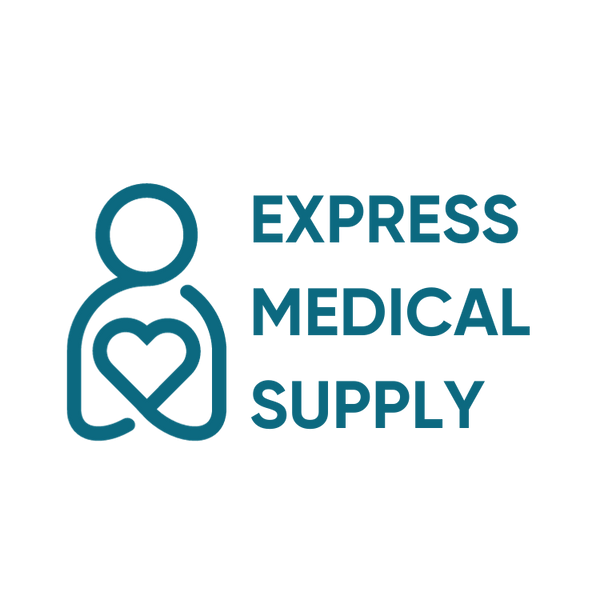Incontinence affects millions, yet many remain unaware of their entitlement to Medicaid-covered supplies.
Understanding the crossover between Medicaid and Medicare coverage for incontinence products can be a complex endeavor - it's crucial to navigate these waters accurately.
Understanding Medicaid and Medicare Coverage
Medicaid and Medicare are distinct entities providing different scopes of healthcare coverage. While both can cover incontinence supplies, they have separate eligibility criteria and benefits. Medicaid, in particular, offers coverage for incontinence products under certain conditions based on state-specific guidelines.
To clarify, incontinence supplies are generally covered by Medicaid, not Medicare. Medicaid is a state-managed program, often providing for individuals with limited resources. Its coverage for incontinence products can vary by state, but typically includes items like adult briefs, underpads, and liners if deemed medically necessary.
Conversely, traditional Medicare Parts A and B do not cover incontinence supplies. They are considered "custodial" rather than medical necessities. However, some Medicare Advantage Plans (Part C) may offer additional benefits, potentially including incontinence supplies.
Eligibility Criteria for Coverage
Medicaid coverage requires meeting state-specific income and asset thresholds for qualification.
Incontinence supplies qualify as covered expenses when prescribed for a medical necessity.
Applicants must also have a documented medical need for incontinence supplies, as determined by a healthcare professional. Coverage varies by state, including the type and quantity of products allowed.
While Medicare typically does not cover incontinence products, some Medicare Advantage plans might include such benefits, contingent upon the plan's specifics.
Types of Incontinence Supplies Covered
Navigating coverage for incontinence products requires understanding the types of supplies generally eligible for Medicaid coverage.
- Adult Diapers/Briefs: For individuals with significant incontinence, requiring full coverage and maximum absorbency.
- Protective Underwear/Pull-Ups: These are suitable for active individuals with moderate to heavy incontinence.
- Bladder Control Pads/Liners: Designed for those with light to moderate incontinence, these are worn inside regular underwear.
- Underpads/Bed Pads: Utilized to protect bedding and furniture, they are essential for individuals with overnight incontinence needs.
- Incontinence Cleansers and Skin Protectants: Products that aid in skin hygiene and protection are also covered to prevent skin breakdown.
Each product is designed with the beneficiary's dignity and comfort in mind, catering to a spectrum of incontinence levels.
It's imperative to note, Medicaid coverage may limit quantities and brands, aligning with medical necessity and cost-effectiveness standards.
Limits and Restrictions
Medicaid establishes specific limitations on the quantity of incontinence supplies a beneficiary can receive monthly. Adherence to these caps is mandatory.
Preferred product brands may not be covered under Medicaid provisions. Cost-effective alternatives are often provided.
To obtain coverage approval, beneficiaries must present a physician's prescription detailing the medical necessity for incontinence products. Without this documentation, supplies will not be authorized for coverage.
Restrictions on Medicaid-covered incontinence supplies also extend to delivery frequencies and the necessity for periodic re-evaluations of the beneficiary's condition. These checks ensure that provided supplies remain appropriate to the changing needs of the individual while upholding Medicaid's efficient utilization of resources. Periodic assessments can result in adjustments to the type or quantity of products allocated.
Navigating Incontinence Product Selection
Selecting appropriate incontinence supplies necessitates a balance between personal comfort and Medicaid's coverage criteria. Understanding this harmony is vital for optimal care.
In the pursuit of suitable incontinence products, beneficiaries are urged to consider both the physical fit and absorbency levels, while being mindful of Medicaid’s formulary for coverage eligibility. It's crucial to find a product that both addresses the user's needs and complies with insurance requirements.
Your choice of incontinence supplies should reflect both functional necessity and personal preference. Investigating Medicaid’s list of approved items will simplify this essential process.
Quality and Variety of Products
The amalgamation of quality and diversification in incontinence products ensures a tailored fit for every unique need, aligning individual comfort with Medicaid's stringent quality standards. Such precision in selection fosters an environment conducive to both well-being and compliance with insurance parameters.
The assurance of dermatologically safe materials is central to product quality assurance.
Indeed, the spectrum of products covered spans from discreet liners to robust protective underwear, each crafted with user-centric considerations (for instance, skin sensitivity and ease of use) and performance.
Each Medicaid-approved product must meet exacting standards of absorbency and comfort, indicating only those with proven efficacy make the approved list.
The range extends to advanced technology solutions, such as sensors for moisture detection, ensuring products not only meet basic needs but also advance quality of life through innovation.
Finally, the key is to match each user's needs with a product of uncompromising quality. These Medicaid-approved offerings are designed to enhance life, not limit it, ensuring dignity and independence.
How to Choose the Right Product
Selecting the right incontinence product involves, first and foremost, an assessment of individual needs such as absorbency requirements, size, and personal comfort. It's fundamental to choose a product that aligns perfectly with your lifestyle and mobility level, facilitating a balance between protection and discretion.
Consider the type of incontinence being faced—stress, urge, overflow, or functional—to narrow down your product options accordingly. These categories will guide the absorbency level needed.
Assessing the fit is also critical since a well-fitting product maximizes both comfort and effectiveness in containing incontinence. Proper sizing (taking into account waist and hip measurements) is essential.
Beyond fit and function, consider the ease of use, especially if there are mobility or dexterity issues. Products should be simple to change while providing reliable protection throughout your daily activities.
When contemplating Medicaid coverage, verify that the products you’re evaluating are listed under your plan. Ensure they meet Medicaid's quality and performance standards while satisfying your personal requirements.
Ultimately, delve into user reviews and seek professional recommendations to inform your choice. Being well-informed ensures selection of the ideal product for a life unhindered by incontinence.
The Ordering Process Simplified
Navigating the realm of insurance-covered incontinence supplies can appear daunting. However, simplifying the ordering process is achievable with a concise understanding of Medicaid and Medicare coverage policies. Recognition of the correct procedural pathways opens the door to timely access to necessary incontinence products, ensuring that this aspect of health management remains consistently supported.
Familiarize yourself with the pre-approval requirements, which typically involve a physician's prescription and a detailed outline of medical necessity. Compliance with these stipulations is paramount to expedite the acquisition and delivery of Medicaid or Medicare covered incontinence supplies, providing peace of mind and the assurance of product availability.
Steps to Obtain Covered Incontinence Products
Securing insurance coverage for incontinence supplies involves a systematic process.
- Verify Your Coverage: Determine whether your Medicaid or Medicare plan covers incontinence products and understand the specific terms.
- Obtain a Prescription: Consult a healthcare provider to get a prescription stating the medical necessity for incontinence supplies.
- Select an Authorized Supplier: Find a supplier that accepts your Medicaid or Medicare plan and is authorized to provide covered incontinence products.
- Submit Required Documentation: Provide the supplier with the necessary documentation, which includes your prescription and proof of insurance.
- Coordinate with the Supplier: Work closely with your chosen supplier to fulfill any additional requirements and arrange for the delivery of supplies.
Medicaid and Medicare have distinct processes and coverage criteria.
Be proactive in adhering to these steps to ensure smooth access to your necessary incontinence supplies.
Required Documentation and Prescriptions
To procure incontinence supplies through Medicaid or Medicare, specific documentation is imperative. This includes a detailed prescription from a licensed healthcare provider, which should articulate the necessity and type of supplies required. The prescription must meet the criteria set by the insurance plan and detail the quantity of products needed per month.
Additionally, patients must submit documented proof of their Medicaid or Medicare coverage. Units including doctor's notes, a diagnosis code, and a treatment plan may also be requested.
The prescription should also state the duration for which the supplies are needed. It's essential to ensure that the documentation is current and re-evaluated periodically, as per the guidelines of the insurance provider, to maintain uninterrupted access to the supplies.
Lastly, it is crucial to understand that Medicaid and Medicare have stringent requirements for the approval and renewal of covered incontinence products. Suppliers often require the completion of a detailed intake form that captures the patient's medical history, documentation of chronic conditions that lead to incontinence, and other related healthcare information. Compliance with these requirements is not merely procedural but essential for eligibility and continuation of supply coverage.
Maximizing Your Benefits
Ensuring you receive the full extent of coverage available through Medicaid or Medicare requires diligent attention to detail. Familiarize yourself with the specific eligibility criteria, which may include periodic medical evaluations, adherence to prescribed treatment regimens, and timely submission of required documentation. Understanding the bureaucratic intricacies of these programs is paramount to optimizing the benefits provided for your incontinence supplies.
Develop a rapport with a knowledgeable supplier who regularly navigates the complexities of Medicaid and Medicare for incontinence products. Their expertise can be invaluable in aiding you to exploit these benefits to the fullest, ensuring that you have continuous access to the necessary supplies with minimal financial burden.
Tips for Cost-Effective Incontinence Management
Strategic purchasing can diminish costs, particularly when buying incontinence supplies in bulk. Seek opportunities for economies of scale which can reduce per-item costs significantly.
Moreover, keep abreast of the latest product innovations and absorption technologies, as modern advancements in incontinence products can lead to using fewer items throughout the day. This not only enhances comfort and life quality but can also decrease overall spending on supplies. Always ensure these products meet the coverage specifications outlined by Medicaid or Medicare to avoid unnecessary out-of-pocket expenditure.
Assess whether reusable products are a feasible option in your circumstance. Products such as washable undergarments or bed pads might offer long-term savings compared to their disposable counterparts, provided they meet your specific needs without compromising on quality or effectiveness.
Furthermore, it is essential to navigate any available manufacturer rebates or patient assistance programs that may offset costs. Such incentives can lead to substantial savings on supplies. Remain vigilant for these offers and consult with your supplier on how best to incorporate rebates or assistance programs within the framework of Medicaid or Medicare coverage to ensure compliance and maximize benefits.
Avoiding Common Pitfalls in Insurance Claims
Proper documentation is crucial to successful Medicaid or Medicare claims for incontinence supplies. Incomplete or incorrect paperwork often leads to claim rejections.
Ensure prior authorization requests align with insurance requirements. Omissions may cause delays or denials.
Maintaining an accurate and up-to-date medical diagnosis from your healthcare provider is vital, as it substantiates the necessity for incontinence supplies. Any mismatch in codes or outdated information can result in denied coverage.
Keep abreast of policy changes that affect coverage for incontinence products. Medicare and Medicaid regularly update their formularies and coverage criteria, which necessitates a proactive approach to understand and adapt to these modifications. Failure to do so can lead to denied claims and unexpected out-of-pocket expenses.

